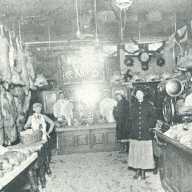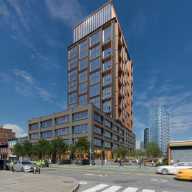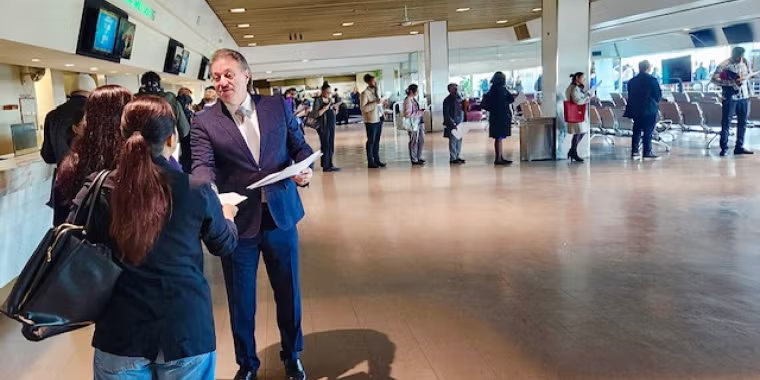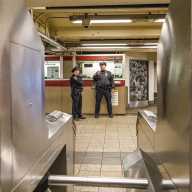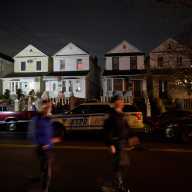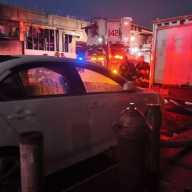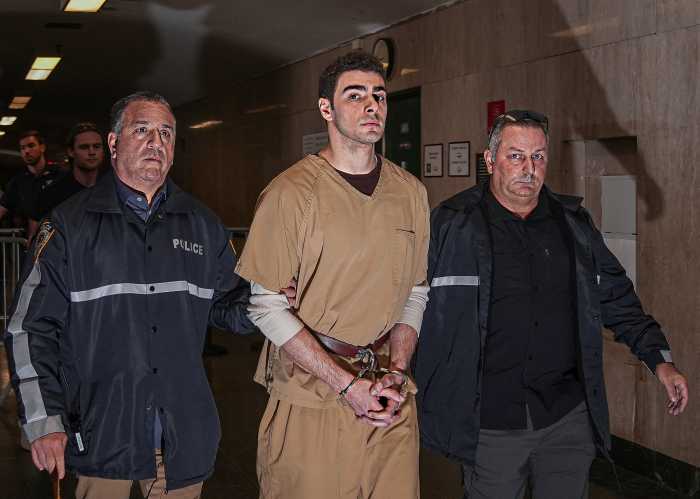In the wake of Fridays near-fatal collapse of the Steinway Street Bridge, the city has hired an independent forensic engineering firm to examine what exactly went wrong.
On Monday, the Department of Transportation (DOT) authorized Weidlinger Associates, a Manhattan-based company, to determine what caused the two 35-ton slabs of concrete to plummet onto the Grand Central Parkway, which seriously injured a motorist.
"As far as forensics is concerned, we want them to look at the concrete," said Tom Cocola, a spokesman for the DOT. "Luckily, we were able to retain the slabs that fell as well as those that were removed."
The firm will also be examining the engineering drawings in their investigation. And although the scope of the study has not yet been set, the company will be granted full access, according to Cocola.
Beginning Tuesday, Steinway Street was reopened between the Astoria Boulevard service roads. But instead of four lanes of traffic, only three were open, two of which were routed southbound, the other northbound toward 37th Street. Traffic agents have been posted to 24-hour watch of the span.
According to the DOT, phase two of of the bridge reconstruction was to start July 26, but in light of the weekend collapse, all construction work has been postponed.
Cal Tran, the company hired to perform the reconstruction, had begun precutting the slabs of concrete on July 1.
"Our engineers determined that since both the west- and east-bound slabs had been precut, they should be removed immediately," said Cocola. "But unfortunately, they fell prior to being removed."
Just one week earlier, on July 20, DOT engineers had met with Community Board 1 members as well as local residents and merchants to get feedback on the undertaking, which was slated for completion in November 2006.
Shopowners supported a four-year piecemeal option for restoring the overpass rather than an alternative one-year undertaking that required complete closure of the bridge. The piecemeal approach would facilitate two lanes of vehicular traffic and keep shoppers coming and going from the busy Steinway Street shopping district.
"We wanted to maintain pedestrian and vehicular access to the best of our ability," said Cocola.
"I personally was in favor of the longer plan, because to cut off the entrance to one of the biggest shopping districts in Queens, even to cut off emergency personnel, is not conducive," said Julian Wager, president of the Steinway Merchants Association. "I really dont feel that the damage resulted from the lengthening of the process."
According to Cocola, the rehabilitation project was nothing out of the ordinary. "This is a very common procedure associated with bridge rehabilitation," he said.
As for Cal Trans record, the company had completed three previous jobs for the DOT without incident. When The Queens Courier attempted to contact Roman Soloko, the engineer in charge of oversight of the project, he declined to comment, deferring all questions to the DOT.
"If the bridge fell, someone was negligent and we need to find out what happened," said Councilman Peter Vallone, chair of the City Councils Public Safety Committee. "Its up to the DOT to find out what went wrong and Ill hold their feet to the fire. I wont rest until our community is safe."
The motorist injured in the collapse, Dimitros "Jimmy" Godosis, was transported to Elmhurst Hospital. A spokesman for the hospital said that Godosis condition was stable. Initial reports said that his leg would have to be amputated, but doctors were able to save it.










